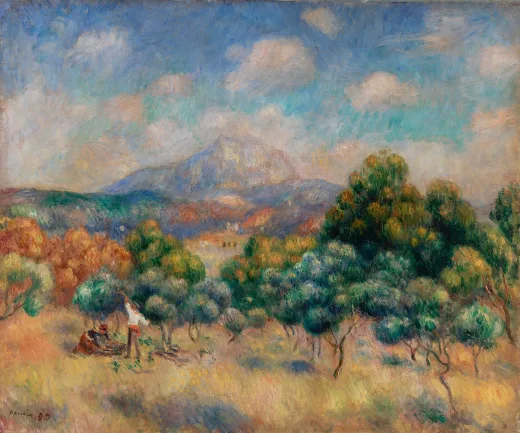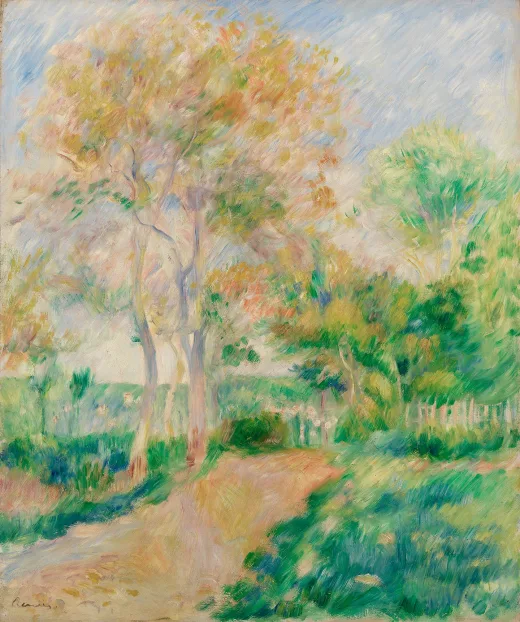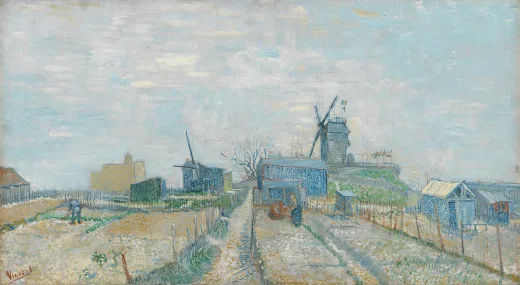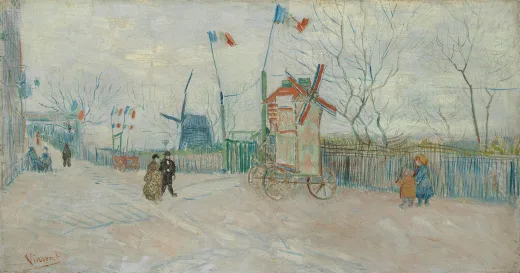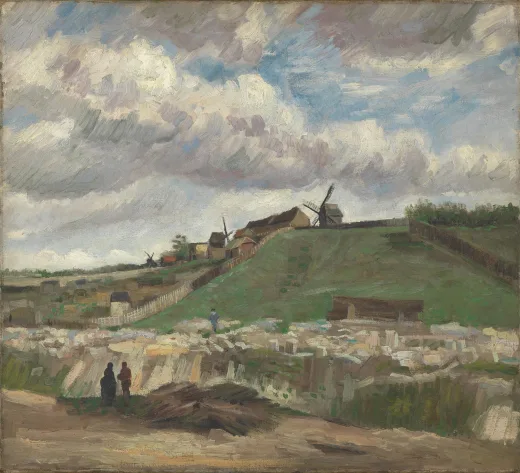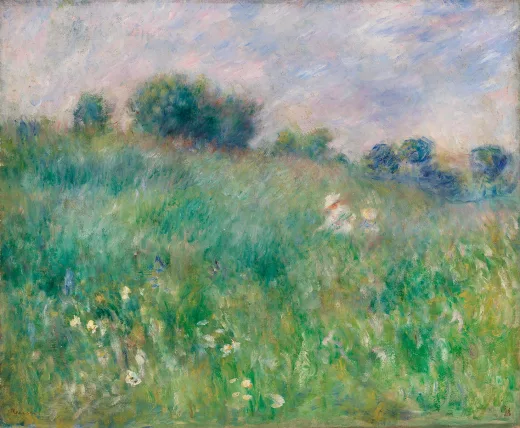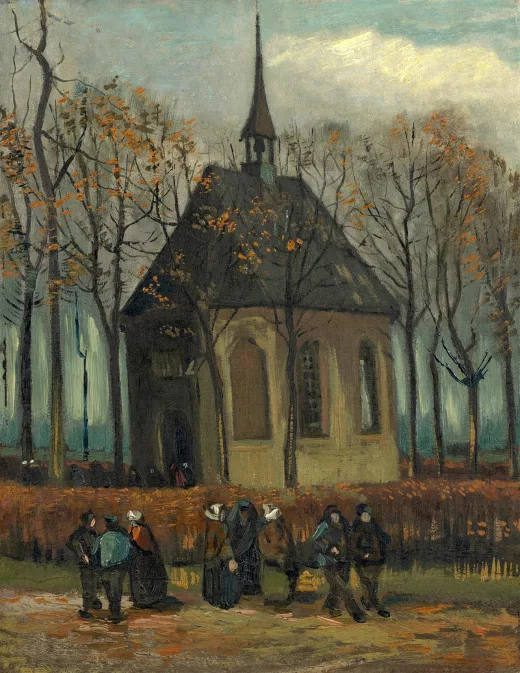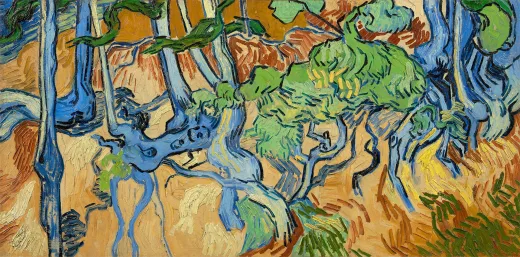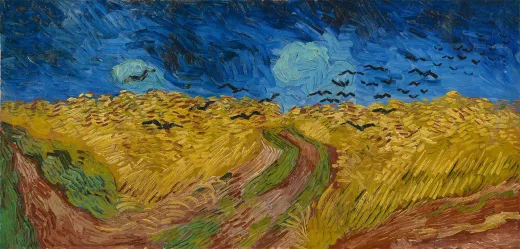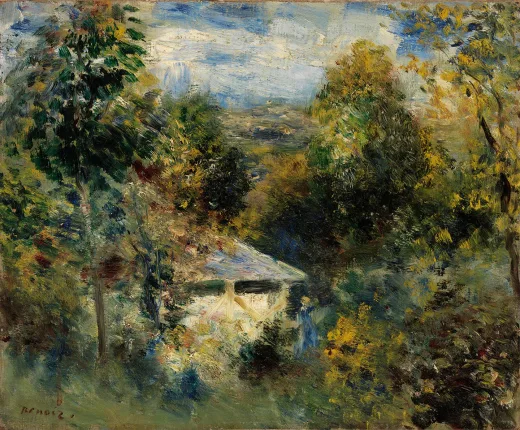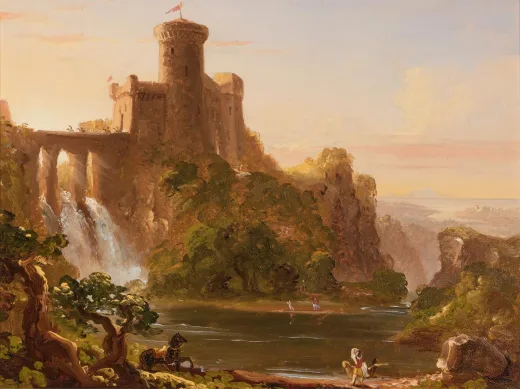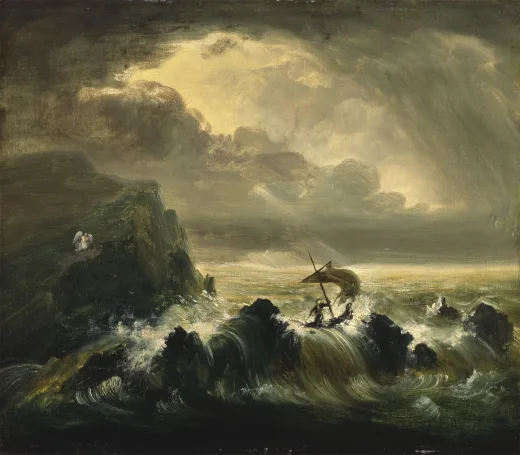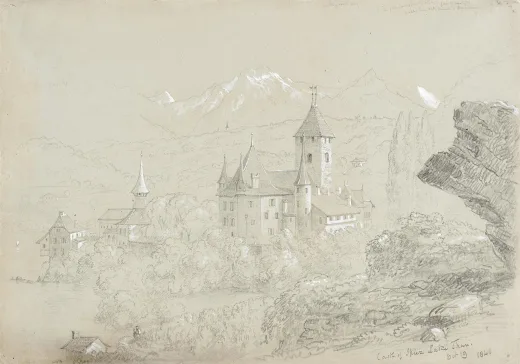托马斯·科尔风景画《归途》高清图片
原图尺寸:4096×2531像素(72 DPI)高清图
下载原图消耗2艺点
文件大小:17.53 MB
下载格式: ZIP ( PNG+ JPG )
作品名称:归途
The Return
作品作者:托马斯·科尔(Thomas Cole)
创作时间:1837年
作品风格:浪漫主义
原作尺寸:100.3 × 161.4厘米
作品材质:布面油画
收藏位置:美国国家美术馆
©CC0公共领域
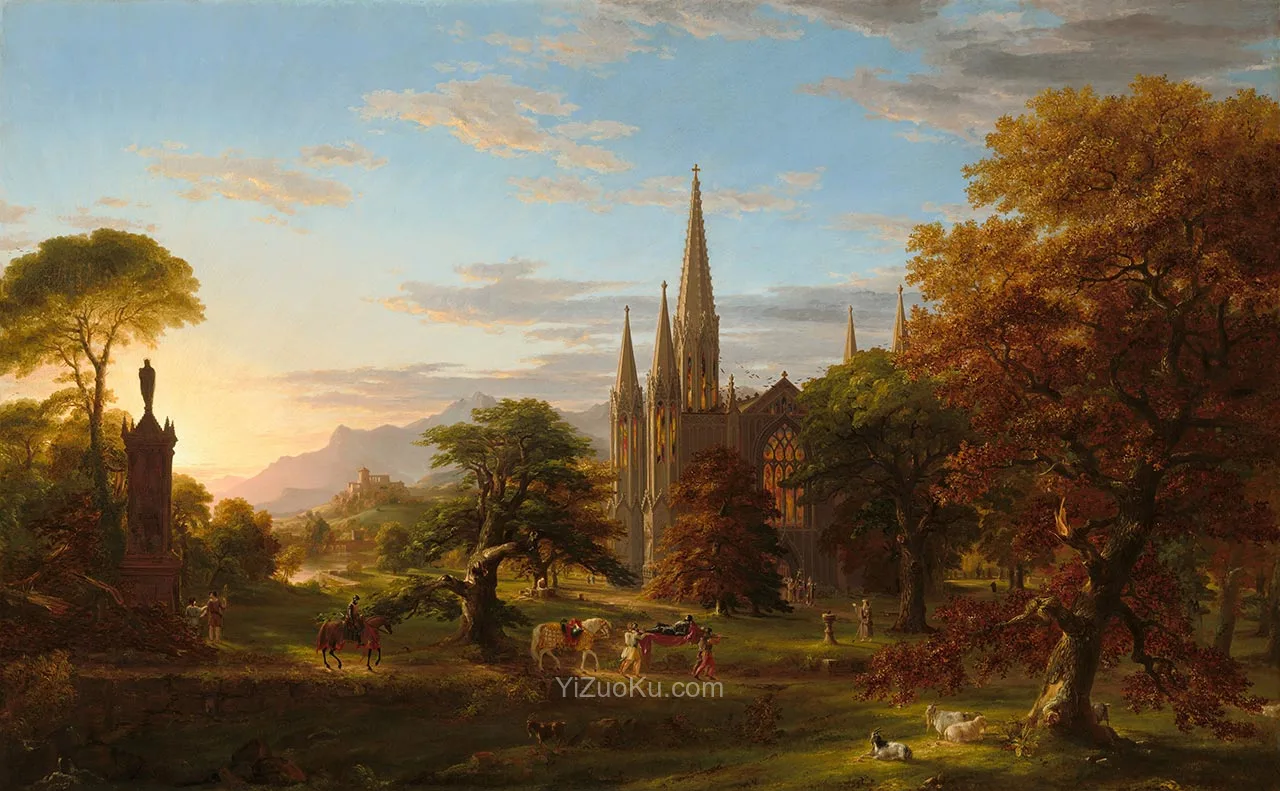
作品简介
《归途》——中世纪传奇的黄昏叙事
托马斯·科尔在这幅与《启程》成对的画作中,将风景转化为中世纪传奇的舞台。这幅横向构图的油画以蜜金色夕照为基调,我们自高处远眺:左侧地平线的阳光为铜褐色的树冠镶边,中央石砌教堂的彩窗与尖顶熠熠生辉。前景泥路上,四名着托加袍的男子肩扛红布覆盖的担架,其上黑发覆面的铠甲武士背对观者。缀金格纹毯的白马垂首跟随,空鞍与缰绳暗示着主人的境遇。左后方持矛骑兵、右前方倚靠方尖碑的持杖男子与女子,共同构成极具戏剧性的空间叙事。
教堂右侧的彩窗燃烧着红橙与托帕石蓝的辉光,主教率领的仪仗队正从拱门涌出。更远处,河流蜿蜒过石桥,建筑群静卧山丘,烟紫色的远山横贯画面中景。艺术家在日晷旁石块与左侧方尖碑基座双重署名"T. Cole 1837",赋予作品时空交叠的隐喻。
艺术解析:
光色系统:夕照色谱从蜜金到烟紫的渐变,通过"铜褐色树冠""托帕石蓝彩窗"等矿物色描述强化物质质感
空间建构:采用"前景仪仗-中景教堂-远景群山"的三重景深,暗合中世纪手抄本画的叙事层次
符号隐喻:空鞍白马象征骑士精神的陨落,断裂的树枝呼应生命无常主题
历史语境:1836年受范伦塞勒委托创作,与《启程》构成"骑士精神的朝暮"对画,实践其"崇高风景"理念)
艺术史评述
19世纪中叶,当纯粹风景画仍被视为次等题材时,科尔通过《归途》与《启程》的叙事对画,实现了其倡导的"更高层次的风景"。正如1837年《纽约镜报》所评:"这些画作不仅捕捉了晨昏的光色奇迹,更以诗人画家的天赋,同时阐明了骑士时代的封建文明、人类在生命黎明时的激昂,以及日落时分葬礼般的沉缓行进。"两幅作品将《帝国历程》系列中的历史寓言提炼为更精炼的视觉史诗,通过铠甲的反光、飘动的袍裾与树木的肌理,在浪漫主义风景中镌刻出永恒的时空诗学。
Thomas Cole turns the landscape into a backdrop for a medieval tale inThe Return, one of a pair of luminous paintings set atsunriseand sunset. Cole drew on several sources, including Scottish historian and poet Sir Walter Scott’s popular verses about warfare between the English and the Scots. The Middle Ages fascinated Americans of the day, inspiring works of literature, architecture, and art.
Honey-gold sunlight from low along the horizon to our left falls across the copper and bronze-colored canopies of trees that frame our view of a stone church with stained glass windows and ornate spires in this horizontal landscape painting. We look down onto the scene from a height, and from a distance. On a dirt path across the front of the picture, an armored man is carried on a red cloth-draped stretcher, which is supported over the shoulders of four men. The armored man has a black beard and hair, and his face is turned from us. The men carrying him wear togas in white, rose pink, slate blue, and mustard yellow. Three of them wear armored breastplates and helmets. A white horse draped with a gold, lattice-like blanket walks behind them. An empty saddle is strapped to its back, and the reigns rest around its neck behind the lowered head. A bit behind this grouping, to our left, another armored man holding a spear rides a brown horse, and, farther back along the path, a man holding a crooked staff and a woman stand near the base of a tall, narrow plinth. The plinth is backlit so ornate carving along the roof-like top creates a spiky silhouette. A sculpted person stands at the peak of the roof, a halo around the head. The area beyond the plinth is layered with trees and bushes extending into the distance, lit sage green by the setting sun. The path with the horses and men runs parallel to a ravine, so the grassy embankment closer to us is in deep shadow. At least two brown goats walk along in the shadows of the ravine near the white horse. Four more white goats, one with black spots, stand and lie near a tree that rises nearly the height of the painting along the right edge. The tree has rust-red leaves, and the trunk leans away from us, to our right. One massive branch has been shorn off, and the exposed wood is caramel brown against the darker, gnarled trunk. The church is beyond the path, to our right of center. Tall stained-glass windows, several stories high, are ablaze in red, orange, and topaz blue. Birds, painted with short strokes of black, flock around the church roofline. A procession led by a man wearing blue and red vestments and a tall, split cap emerges from the main, arched doorway. Another man wearing a brown robe stands near a sun dial between us and the procession coming from the church. The wide brim of that man’s hat is fastened at the front with a gold object. He lifts one hand and holds a long staff with a black knob at its center with his other. More people walk near the church, sit on a bench under a tree, and move through the landscape deep into the distance. All the people have light skin. Beyond the moss-green, grassy area around the path and church, a river winds under an arched bridge. A tan-colored building complex sits on a low hill to our left of center. Across the back of the scene, smokey purple and muted mauve-pink mountains line the horizon, which comes about halfway up the composition. The vivid yellow sun is low on the horizon to our left. A few light gray clouds skim across the sky, which deepens from pale yellow along the horizon to light blue along the top of the painting. The artist signed and dated the work on a stone near the man next to the sundial: “T. Cole 1837.” He also signed the front face of the tall pedestal to our left with the same text, though it is difficult to make out.
In the mid-19th century, pure landscape pictures were traditionally ranked lower than other subject matter, such as themes from history, mythology, literature, or religion. Thomas Cole sought to create what he called a “higher style of landscape” that blended narrative elements into carefully executed scenes from nature. His use of two canvases allowed him to build his narrative to even greater technical and emotional heights.The Departureintroduces a troop of knights embarking on a heroic crusade in the early summer led by their lord on his valiant white horse. InThe Return, a smaller group—weary and defeated—trudges home in the autumn dusk; they carry the dying lord, his riderless horse trailing behind.
The two landscapes were commissioned as a pair by wealthy landowner William Paterson Van Rensselaer in December 1836, specifying only that the paintings should depict morning and evening. Cole had recently enjoyed critical and popular success for his epic five-canvas series,The Course of Empire(1836, The New-York Historical Society) completed earlier in the year, which likely made Van Rensselaer choose him for the project. That Cole achieved his goal of a “higher style of landscape” among his contemporaries is reflected in the praise the paintings received in an 1837New-York Mirrorreview:
These pictures represent Morning and Evening, or Sunrise and Sunset; and are, merely from that point of view, invaluable. They contrast the glowing warmth of one, with the cool tints and broad shadows of the other; and to do this is the work of a master, who has studied nature and loves her….Not only this is done, but a story is told by the poet-painter, elucidating at once, the times of chivalry and feudal barbarism, and the feelings with which man rushes forth in the morning of day and of life, and the slow and funereal movements which attend the setting of his sun.


